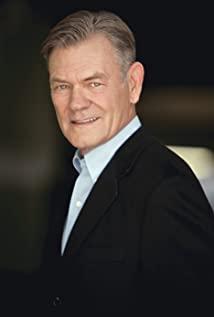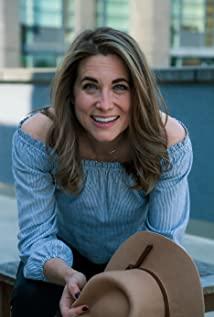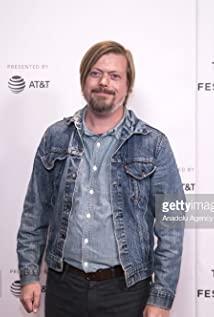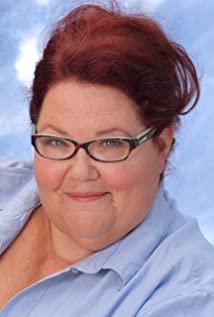After 25 years of long wait for the audience, David Lynch and Mark Frost finally joined hands to bring the return season of "Twin Peaks" again, and called it a 17-hour movie divided into 18 parts. Full-length movie. And this time, the two core creators seem to have the mentality of fulfilling their mission and long-cherished wishes, and began to think about the meaning of the world of "Twin Peaks" from the whole and the source, and finally used extremely mature image expression techniques to show us A postmodern masterpiece with complete structure and rich meaning. Among them, the most critical point is that the return season strictly implements the core theme of the duel between light and darkness, and clearly expresses the two protagonists of the righteous and evil Cooper as clues that run through the main axis of the film, and play with the big and small characters in the film. Directly or indirectly dealt with, and at the same time used it to link most of the important clues in the previous two seasons and "Going with Fire". Furthermore, the film raises the story of the "Twin Peaks" world to the level of chronicles and decisive battles. On the one hand, it goes back to the origin in depth, completely constructing and showing the complex between the guardian gate, the night guard and the real world. The way of linking and making the important roles in the two camps of good and evil fully appear, especially the clarification of the birth of Bob and Lola, and the implication of Sara’s true identity, it can be said that it has finally been wiped out for a long time. The mystery shrouded the audience's mind. The idea of tangling the first nuclear explosion with the world timeline of "Twin Peaks" in the film clearly entrusts the creator's thinking and position on the pros and cons of human technological development. It can be seen that from the first and second seasons, Dale Cooper’s perspective of an outsider opened the curtain to show the mysterious world that gave birth to light and darkness at the same time, to "Walk with Fire" (also including "The Lost Fragment" ) From the perspective of Lola Palmer to experience the struggle and redemption in the face of darkness in such a world, finally in the return season, the former outsider Cooper in the first act has been promoted to the new party. Faced with the darkness in this world, and competed with it (and very clearly divided into confrontation with the inner darkness and the outer darkness in turn), and finally achieved a substantial phased victory-at this point, the world of "Twin Peaks" is grand The three-act play finally came to an end. These three paragraphs were interpreted in different tones, and entangled to form a polyphony, emphasizing the sole theme of the duel of light and darkness, and composing a magnificent symphony.
And as the author predicted when commenting on the second season, the battle between righteousness and evil, which will never stop in the history of human spirit in the "Twin Peaks" series, is adopted in this season. Finishing in a sleek and clever way. As has been analyzed by many viewers, at the end of the film, Cooper travels through time and space and through self-sacrifice, retrieves the imprisoned Lola Palmer in the reset timeline and brings him back to Shuangfeng. The town therefore achieved a certain degree of victory and completed a phased bright ending. But be sure to stay awake, this does not mean that in the world of "Twin Peaks" the light has defeated the darkness once and for all. In fact, the darkness has only temporarily suppressed the limelight, but it is always waiting for the opportunity to counterattack. And let us recall the failed family situation of the manic mother and vomiting boy trapped in the car in the shooting accident outside the RR restaurant, Becky boyfriend and his concubine, and Secretary Ben Horne who were eventually swallowed by despair. The Ben Horne's feud, the mentally retarded Johnny Horne, and the astray Richard, not to mention the unknown but definitely not optimistic Audrey Horne, they are all in the same film. This kind of negative state, and it's all in the narrative place, and does not show the subsequent development. These unfinished fragments can be regarded as a warning that Lynch intentionally left us.
The overall plot design of the film reflects the feedback from fans at two levels. One is the feedback to the loyal audience of "Twin Peaks": In the return season, the main creator not only responded honestly to the story so far, but also steadily picked up the mess left in the second season, making this film The status quo of almost all supporting roles in the past has been explained-although the endings of all the characters are not given (such as Harry Truman and Audrey Horn). It is worth noting that in the first two seasons, the narrative stage was limited to the very closed Shuangfeng Town, and the status of the big and small characters was relatively conservative and closed. In the return season, this state was broken from the first episode, and the narrative stage was not only expanded to New York, Antlers, Las Vegas, Odessa, etc. (in fact, the narrative of "Two Peaks" The expansion of the stage was first seen in "Walk with Fire". It can be seen that Lin Qi's work on the structure of the "Twin Peaks" worldview also began here, which is why compared to the previous two seasons, "Walk with Fire" It is more important for the return season, and the clues in the latter are repeatedly quoted in the film. Therefore, it can be roughly considered that the story of the return season has been conceived 25 years ago), and even the main characters in Shuangfeng Town have begun to interact with each other. Keeping pace with the times and enjoying the convenience and bonuses brought by the technology of the new era, the most notable ones are Frank Truman’s mobile phone and the rather exquisite telescopic computer desk, the high-tech central terminal station of the Shuangfeng Town Police Department, Jie Dr. Kirby started a conspiracy theory radio program. Lucy and Andy also travelled out of town every year. Even the old doctors over ninety years old have long been accustomed to diagnosis and treatment through Skype. At the same time, the contradiction between tradition and modernity and the content of reconciliation were more clearly put on the table during the return season: for example, Lucy gradually accepted mobile phones with the development of the story; the police department is using advanced communication and positioning technology to carry out When investigating, the tradition of mysticism was still retained; Jerry Horn was unable to adapt to the new tools, so he ended up in a situation like a ignorant savage; Nadine finally started from Jack Kirby’s anti-capitalization radio program While they were redeemed in the midst of the commercialization of the restaurant, Norma clung to the original aspirations. The trilemma between them and Ed that had lasted for 25 years was finally solved.
The second is the intertextuality between the creator of the film and other works in the creation and production of the film as the author, which once again introduces a broader and brand-new discussion space for "Double Peaks". For example, through director Lynch’s experience and insights accumulated in the long artistic career since the last time he created "Double Peaks", he finally introduced a large number of new artistic expression elements to the return season. We have never seen such a "Twin Peaks" full of fixed positions and long shots, so emotionally full; we have never seen such a rich variety of transition performances in the Roadhouse (which made it finally in In essence, it has become a warm haven in the chaotic world of "Twin Peaks"); we have never seen such a complex and multi-layered dream narrative structure in the story of "Twin Peaks"; and those in the film are surreal and out of control The children’s post-modern collage techniques and rough DV textures used in the depiction of the scenes are almost born out of Lynch’s previous works; even the 17th and 18th parts of the film also appear in the film, which uses counterpoint editing. The astonishing method of meta-narrative intervention to expand the worldview (updated on July 3, 2019: Lynch denied this claim in an interview with the British Guardian ). In addition, there are many tributes or ridicules to other directors’ works in the film. The most memorable ones are the tribute to Kubrick’s long panoramic view of the nuclear explosion and the extreme reaction that took place on the Lancelot Court block. Quentin's black humor bridge segment.
For the return season, what needs to be further emphasized is the wonderful design of the key plots in the film and the excellent control of the shots during the implementation of these plots. Its notable feature is that it is fully sensitive to rhythm and sense of time, and finally shows A kind of "elegant slowness", on the one hand, it advances the narrative very calmly, shaping the characters, showing the relationship between the characters, and laying out the necessary emotions; on the other hand, it brilliantly shows the image tension of some special moments. , The following classifications are given as examples:
First, the film’s level of expression of images in different spaces in the world of Twin Peaks has far exceeded the first two seasons of Twin Peaks, and to a certain extent inherited the expression style of Walking with Fire (recall that Group of famous and amazing Lola sleepwalking shots), so more sophisticated and tension. For example, the two-day silent surveillance of the glass box house in New York and the two visits of his girlfriend appear as a wedge at the beginning of the film, and the arrangement sequence is even before the town of Antlers, thus declaring that the scope of the film will surpass the past. (Including "Along with Fire"), it not only made the audience familiar with "Twin Peaks" unexpected again, such as falling into the fog, but also quickly set the consistent multi-angle scheduling style for the film; and Cooper from The scene of the night watch door falling into the transparent glass box not only has a direct logical relationship with the aforementioned plot, but also creatively used extremely simple techniques to show the strangeness and dramatic tension of the image in place; then Cooper Falling into the steel fortress and first seeing Naido (i.e. the imprisoned Diane) plot, it uses an image processing technique that the viewers of "Twin Peaks" have never seen before-this seems to fiddle with the frame (some kind of To a certain extent, the simple technique of time frame) was reproduced in the subsequent sections involving convenience stores (ie, evil forces’ lairs) in Parts 8 and 15. The treatment method when Bo dropped the glass box was the same in different ways. It was extremely concise and stylized to show a strange feeling of time stagnation and space fragmentation.
Second, there are also many wonderful plots designed to portray the characters’ images and personalities in the film. Most of these plots are expressed in a typical Lynch-style surreal or absurd way, creating a strange relationship with the audience. From the effect. For example, the phone call of Mr. C (Black Cooper) in the federal prison, with a completely unexpected creativity, succinctly and accurately demonstrated the great spiritual oppressive power of Mr. C; similarly, Mr. C and the black boss The absurd plot of casual preaching while breaking his wrists, while showing the amazing physical power of Mr. C, also implies his contempt for the world of the world. In Part 12, Albert is making a statement to Gordon Cole. ) Before Diane’s brief report, he angrily endured the long and artificial difference between the latter and the unknown French girl. This plot hardly showed the diametrically opposed values of the two again, and thus Creates a very advanced sense of humor (and some audience analysis speculates that this plot is also another extremely obscure dumb mystery between the two); Audrey and Charlie’s long front-and-back indoor one-act scene was cut to The three parts 12, 13 and 14 can be said to be another extreme post-modern absurd plot in the film. The emotions of depression, despair and hysteria can even be compared with the text in "Waiting for Godot". In addition, there are many similar plots, such as Sara Palmer’s late night alone and the looping of boxing matches on TV. Ben Horn and the secretary detect and explore what actually comes from connecting the night watch. The sound from the channel, and the last confusing question from Cooper and Laura in front of Gate 708.
Then, the other two sets of shots in the amazing part 8 showing the origin of "Twin Peaks" deserve to be explained separately. The first group is a telephoto panoramic push mirror showing the extremely oppressive scene of the nuclear explosion in 1945, which suddenly pulled the story of "Double Peaks" from the present to the origin. The scene seems to be jumpy and lacks logic, but once connected to the scene of Judy spitting out Bob, it perfectly creates a logical link with the plot before Mr. C’s recovery, clarifying Bob’s role as a symbol of evil. The origin of the birth; and then the film continues to logically use a series of shots to show how the good against it-Laura Palmer-was born in the gate of the sun. The second set of shots shows the plot from the birth of "Toad" to its final invasion of Sara Palmer. This plot is mainly composed of three fixed-length shots to complete the narrative: the first fixed shot directly constitutes the plot of the nuclear explosion in 1945 The response was a series of hard-cut push mirrors and finally fixed on a solitary egg in the middle of the desert of New Mexico, and the one that broke out of the egg and staggered out was shocking and terrifying in shape." "Toad", this involuntarily makes the audience feel strange and uneasy through the association between the direct picture and the plot; the second fixed shot shows the scene of "Toad" still wandering in the desert, and serves as a "woodcutter". "Woodsman" (Woodsman) casts the montage of the broadcast curse. We still don’t know where the bug will crawl, but after cutting into two Sara Palmer’s houses, we finally know where the bug is; The third fixed shot of "The Lumberjack" stayed in front of the close-up of the side face of the girl Sara who was brought down by hypnosis, so we witnessed the extremely shocking scene in the continuous chanting and uneasy silence of "The Woodman"; A fixed shot (the background shot at the end of the staff table) is actually a continuation of the third fixed shot. Sara, who was invaded, frowned from time to time in the deep hypnosis, and the background was echoed with continuous wind and electric noise. People know what will happen next, but there is no doubt that it will never be a good thing to know what may happen. Therefore, the strange and uneasy emotions that have been generated in the audience's hearts are further strengthened by this extended fixed lens. At this point, the two key plots that established the original worldview of "Double Peaks" are explained in a minimalist and in place by a set of upgraded push mirrors and a set of fixed long mirrors in a moving and static way.
It can be seen that the meaning contained in these catching plots is accurately expressed by these carefully designed and realized shots, which together create a new and unique atmosphere for the return season, and this atmosphere is undoubtedly rooted in " The world of "Double Peaks" is consistent with its consistent tone, but whether it is out of love for the unchanged or new things, these wonderful clips will eventually become the first shining points that the audience thinks of when recalling the film.
All in all, the return season of "Double Peaks" can be regarded as a masterpiece of Lynch’s creative style and expression skills in his career so far. It is also Lynch’s most mature work of expressing his philosophical views. "Double Peaks" is the most in-depth and complete enclosing work of the core interpretation of the world. In this 17-hour epic film divided into 18 parts, the ambition and imagination of the pipa that had not been formed in the first two seasons of "Twin Peaks" but still held in "Walk with Fire" has finally been fully released These images show unique power and strangeness, making the audience feel a long-lost shock again after 25 years; and its existence will definitely add a strong touch to the history of film.
View more about Twin Peaks reviews











